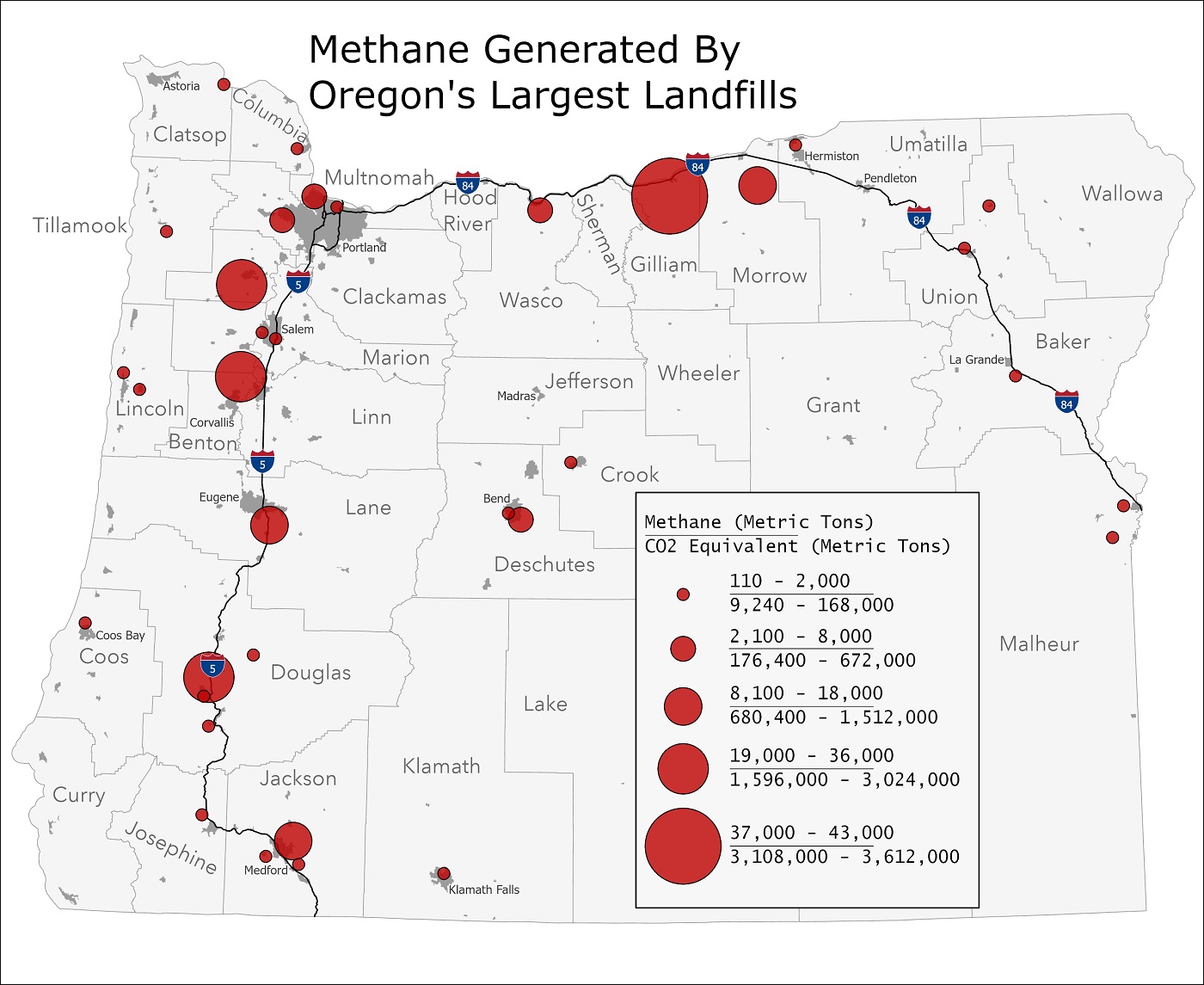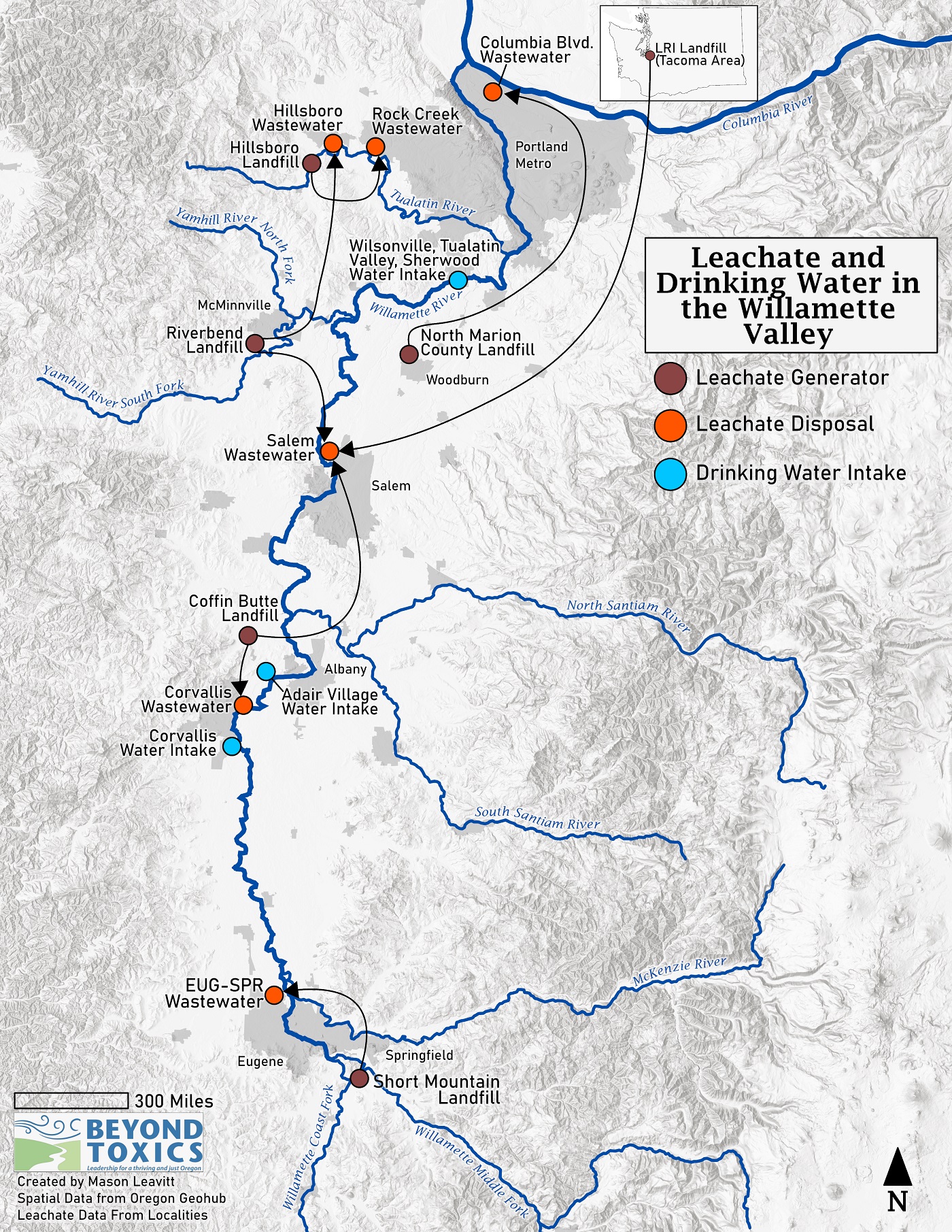Waste Management Projects
We envision a future with a holistic waste management approach that considers the use of resources from cradle to grave. Our end goal must be zero waste.
BREAKING NEWS
Coffin Butte is Seeking Expansion of Landfill This Year!
How you can get involved:
REGISTER FOR OUR COMMUNITY MEETING: AUG. 13th!
Join us for a community meeting about the planned Coffin Butte Landfill expansion
WHAT: Coffin Butte Landfill Expansion Community Meeting
WHEN: Tuesday, Aug. 13th from 7 to 8:30 PM
WHERE: 2601 NW Tyler Ave., Corvallis, OR (google map)
Are you concerned about your environment and community? Coffin Butte is expanding, and we need your input! Join us at the community meeting to discuss environmental challenges, climate impacts, toxic concerns, and long-term liabilities related to the expansion of Coffin Butte Landfill.
Expert Panelists:
Hydrologist
Environmental Engineer
Beyond Toxics Staff
Download the Community Meeting Flyer (PDF)
NEWS:
Coffin Butte operator sets stage for second dump expansion attempt by Alex Powers, Corvallis Gazette-Times (Jun 21, 2024)
Why is Waste Management An Important Issue of Concern?
Climate Justice
Whether trash is landfilled or incinerated, there are challenges in managing the production of greenhouse gasses. Incineration produces a whole lot of carbon dioxide, while decomposing organic waste in landfills produces methane, a greenhouse gas 84x more powerful than carbon dioxide. Methane can build up at a landfill and result in massive leaks to the atmosphere. Additionally, carbon monoxide and particulates are produced when captured landfill gas is burned as fuel at a gas-to-energy facility or flare.
Air Quality
Whether waste is incinerated or deposited into a landfill, there are many impacts to air quality that need to be addressed for community safety. Incineration combines all of the chemicals found in waste creating new hazardous byproducts that need to be caught and mitigated rather than enter nearby community air spaces, which can pose health risks. Similarly, landfills slowly generate landfill gas, a combination of methane, carbon dioxide, and tons of Volatile Organic Compounds (VOCs). Landfill gas constantly searches for a way to escape the landfill and enter the atmosphere where it can harm the climate, nearby residents health, or create a noxious smell posing nuisance concerns. Whether it's a landfill or an incinerator, Beyond Toxics is a watchdog ensuring regulators are holding waste management facilities accountable.
Leachate and Water Quality
Leachate can be thought of as garbage juice. Sound gross? As water travels through landfills or incineration ash, it accumulates all sorts of toxic materials along the way including heavy metals, solvents, and more. Throughout the waste management process, water is introduced to garbage or waste byproducts contaminating it with toxins found in the waste stream. In incinerators, water is introduced into leftover ash in order to cool the ash to manageable temperatures. Additionally, ash from incinerators is frequently landfilled in ash monofills or in regular landfills mixed with other garbage, which results in another opportunity for leachate creation. In landfills, water is introduced to garbage, or ash, by precipitation or residual moisture from food waste and other materials.
How is Leachate managed?
Landfill operators are required to install a leachate collection system by placing pipes along the bottom of the landfill which is lined with a plastic membrane to prevent contact with soil and groundwater. Some landfills choose to add additional protections such as a clay layer. When the membrane rips or tears from wear over time, leachate can contaminate the groundwater and soil forming a plume. In an ideal scenario, the liner catches the leachate and pumps it into a storage “bladder” or tank.
Most landfills send their leachate to municipal wastewater treatment facilities, where it is combined with city sewage. Sewage treatment facilities are not designed to treat the highly concentrated toxins present in leachate, and consequently many of the heavy metals and PFAS pass through the treatment plant.
Read more about PFAS
Projects
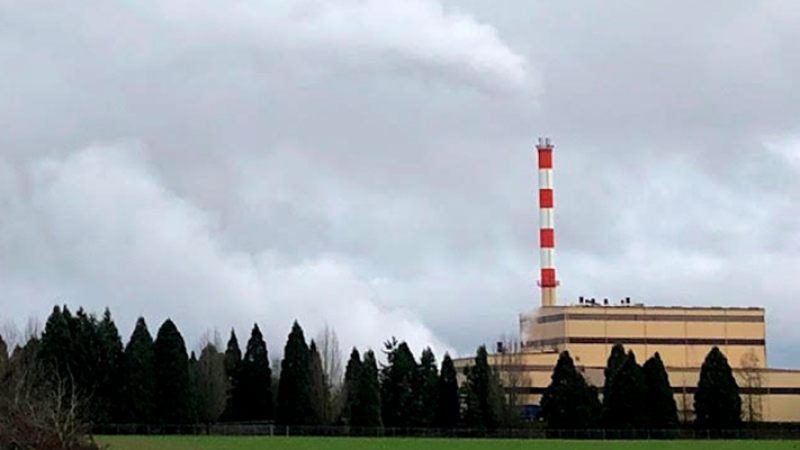
Covanta Incinerator
Covanta Marion may be Oregon’s only garbage incinerator, but the 1986 complex is one of the oldest, most out-of-date and polluting facilities. It burns an assortment of waste products to produce 13 megawatts of electricity. Covanta is among Oregon’s most dangerous polluters. The incinerator produces highly toxic air emissions from its stacks and toxic-laden ash that is hauled away and dumped on land. The Oregon Department of Environmental Quality determined that high levels of mercury in the Willamette River are associated with the waste water that Covanta Marion discharges directly into the river. | Learn more
Resources
Read the Salem Statesman-Journal reporting on the SB 488 Victory in 2023 Oregon legislative session
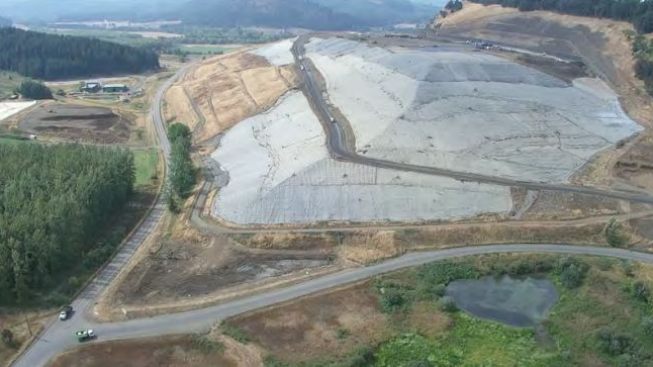
Coffin Butte Landfill
Communities around the Coffin Butte Landfill, north of Corvallis, sought our assistance to help stop a plan to expand the landfill by 30% and understand the landfill's toxic impact. Collaborating with the community, our research uncovered alarming methane leaks and millions of gallons of landfill leachate, containing high levels of PFAS, discharged into the Willamette River every year. | Learn more
Resources
8 Reasons to Oppose Expanding Coffin Butte (PDF)
Future of Benton County and Coffin Butte Webinar Recording (YouTube)
Landfills in Washington and Oregon leaked ‘explosive’ levels of methane last year - Grist Magazine
See the April 2024 webinar: Future of Benton County and Coffin Butte (YouTube)
See Mason Leavitt's latest blog, "What’s Trash Got To Do With It? Toxics!"
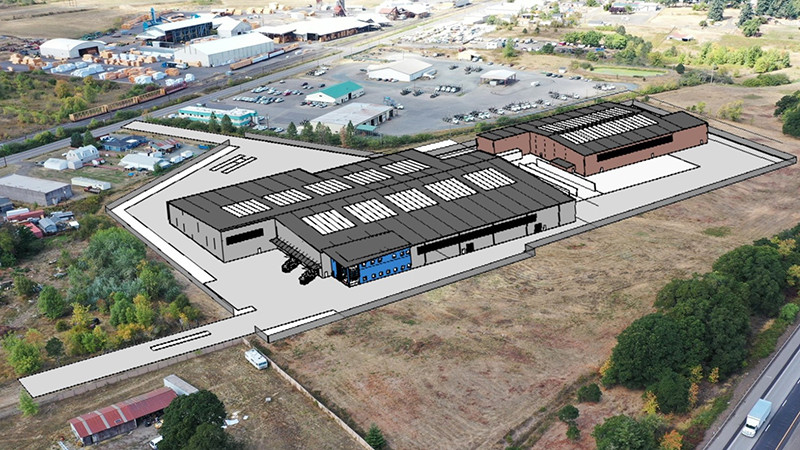
Short Mountain Landfill
Organic material in the landfill decays anaerobically - producing methane, carbon dioxide, and other trace gasses. Methane and carbon dioxide are categorized as pollutants due to their warming potential in the atmosphere. Methane can build up at a landfill and result in massive leaks to the atmosphere. Our success in urging the creation of an Integrated Material and Energy Recovery Facility at Short Mountain (pictured above) will make a big difference to reduce methane gas releases in Lane County. | Learn more

PFAS
A growing body of scientific research has found links between exposure to PFAS, a class of chemicals, and a wide range of health problems, including a weaker immune system, cancer, increased cholesterol levels, pregnancy-induced hypertension, liver damage, reduced fertility, and increased risk of thyroid disease. | Learn more
Resources
Coffin Butte Landfill workers allege safety and environmental violations
Statesman Journal, April 16, 2024
More Than Half of U.S. Landfills Are Methane ‘Super-Emitters,’ Study Finds
By: Cristen Hemingway Jaynes
Published: EcoWatch, March 29, 2024
Oregon cites Republic Services' Coffin Butte Landfill following worker complaints
Workers have been raising health and environment concerns for more than six months. The company denies the allegations - by Tracy Loew, Salem Statesman Journal
ALSO:
See Chemicals that were once common and are now banned in the U.S. (information provided by Stuart Greenleaf)
